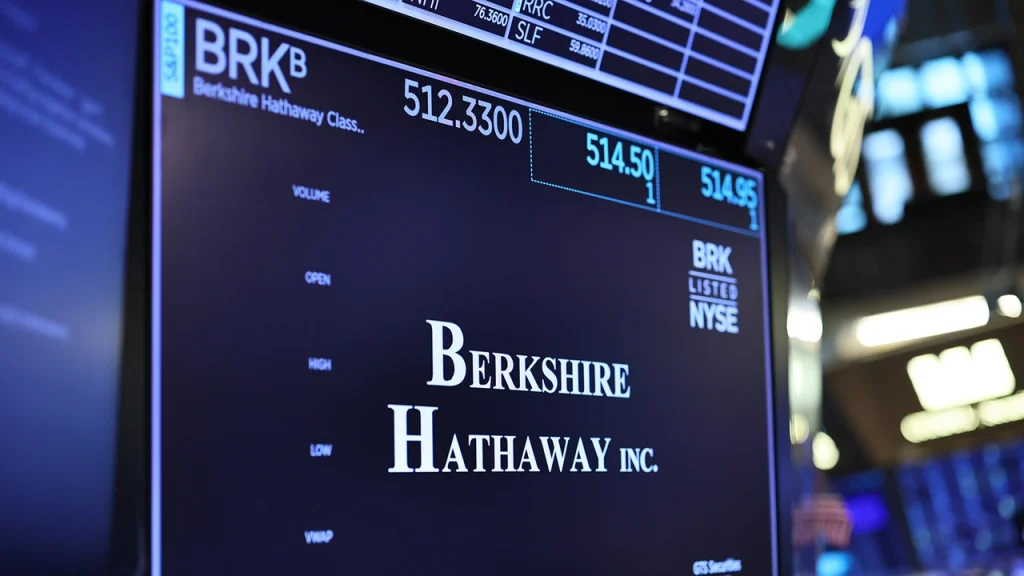Unlocking Wealth: A Deep Dive into Berkshire Hathaway Stock – Is It Still a Smart Investment?

In the realm of investing, few names resonate as powerfully as Berkshire Hathaway. With its storied history and a legendary leader at the helm, Warren Buffett, the conglomerate has captured the imagination of investors worldwide. As the market fluctuates and new trends emerge, many are asking: is Berkshire Hathaway stock still a wise choice for wealth accumulation?
In this article, we’ll embark on a comprehensive exploration of the company’s financial health, growth prospects, and competitive position in today’s dynamic economy. We’ll analyze key factors that have driven its success, evaluate recent performance data, and provide insights into whether this investment can continue to unlock wealth in your portfolio. Join us as we dissect the layers of Berkshire Hathaway and uncover what makes it a unique opportunity in the ever-evolving financial landscape.
Historical Performance of Berkshire Hathaway stock
Berkshire Hathaway (NYSE: BRK.A, BRK.B) has delivered exceptional long-term growth under Warren Buffett’s leadership. Since 1965, the stock has achieved a compounded annual gain of 19.8%, doubling the S&P 500’s 9.9% average. In 2024 alone, BRK.B surged 25.5%, outpacing the S&P 500’s 23.3% rise. By Q1 2025, Class A shares hit a record $782,014.24, with a market cap exceeding $1.1 trillion. Despite a 64% YoY profit drop in Q1 2025 due to investment losses, cash reserves climbed to $347.7 billion, reflecting Buffett’s defensive positioning.
Key Factors Influencing Berkshire Hathaway’s Value
Three pillars drive Berkshire’s value:
1. Diversified Portfolio: Insurance (41% of pre-tax earnings), railroads, utilities, and equities like Apple and Coca-Cola stabilize cash flow.
2. Cash Reserves: A record $347.7 billion provides flexibility to acquire undervalued assets during market downturns.
3. Leadership and Strategy: Buffett’s value-investing philosophy and disciplined capital allocation remain central. His succession plan, with Greg Abel poised to take over, aims to ensure continuity.
Analysis of Warren Buffett’s Investment Philosophy
Buffett’s strategy revolves around:
Long-Term Value Investing: Focus on businesses with “moats” (durable competitive advantages)。
Margin of Safety: Buying undervalued stocks to minimize downside risk.
Avoiding Speculation: Rejecting short-term trades for compound growth.
His recent moves, like boosting stakes in energy and infrastructure, align with this approach.
Current Market Trends Impacting Berkshire Hathaway
In 2025, Berkshire thrives amid market volatility. While the S&P 500 dipped 5% in Q1, BRK.B rose 16% as investors sought stability. Rising interest rates boosted bond income ($22 billion in 2024), and Geico’s turnaround added $600 million weekly to operating cash flow. However, inflation and geopolitical tensions (e.g., Taiwan semiconductor risks) pose challenges.
Comparing Berkshire Hathaway with Other Investment Options
S&P 500 ETFs: Berkshire outperformed the index in 2024 (+25.5% vs. +23.3%) but requires active monitoring.
Tech Stocks: Lower volatility than high-growth tech but offers steady dividends (though BRK doesn’t pay one)。
Private Equity: Berkshire’s transparency and liquidity (via public shares) reduce entry barriers.
Risks and Challenges Facing Berkshire Hathaway Investors
1. Leadership Transition: Buffett’s eventual exit could impact investor confidence.
2. Market Concentration: Over 40% of equity holdings in Apple creates sector risk.
3. Regulatory Pressures: Stricter climate policies may affect energy subsidiaries.
4. Valuation Peaks: BRK.A trades at 1.69x P/B, near historic highs, limiting margin of safety.
Expert Opinions and Predictions for Berkshire Hathaway stock
Analysts remain divided:
Bullish: Keefe, Bruyette & Woods raised BRK.A’s target to $775,000, citing insurance gains and cash deployment.
Cautious: Deutsche Bank warns macro uncertainty and succession risks may cap upside.
Long-term forecasts suggest BRK.B could reach $803,598 by 2030, driven by infrastructure and AI investments.
How to Invest in Berkshire: A Step-by-Step Guide
1. Choose Share Class: BRK.B ($769,000 as of May 2025) is more accessible than BRK.A ($782,014)。
2. Open a Brokerage Account: Use platforms like Fidelity or Vanguard.
3. Allocate Wisely: Limit exposure to 2–5% of your portfolio for diversification.
4. Monitor Earnings: Track quarterly reports (next release: July 30, 2025) for cash reserves and segment performance.
Conclusion: Is Berkshire a Smart Investment in 2025?
Berkshire offers a unique blend of stability and growth potential. Its cash hoard and diversified empire position it to capitalize on market dislocations, while Buffett’s successor, Greg Abel, is expected to uphold value-driven strategies. However, high valuations and leadership transition risks warrant caution. For long-term investors seeking low volatility and compounding returns, BRK.B remains a cornerstone holding. Short-term traders should await dips below $750,000 for better entry points.